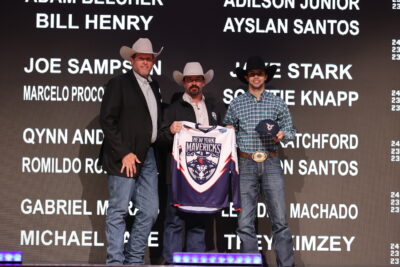
As the spring sports season gets underway, the thrill of competition also brings the inevitable bumps and bruises, some of which can be serious—or even deadly—if not properly diagnosed and treated. In fact, every seven seconds, a head injury occurs.
Fortunately, one local urgent care now provides two thorough tests to help physicians determine the extent of the trauma, so players don’t immediately return to the field before they have healed, making them vulnerable to more severe injury.
Among 15 to 24 year olds, sports participation is the second most common cause of head injury after motor vehicle accidents, according to William Mullally, MD, clinical director of the Sports Neurology and Concussion Clinic at Brigham and Women’s Hospital and an assistant professor at Harvard Medical School, who noted that Traumatic Brain Injury (TBI) has become a major public health concern and the medical community must protect athletes from suffering permanent brain damage.

Anyone who loses consciousness after a blow to the head should seek medical attention immediately. Those who have had concussions, which are caused by a jolt to the head, are more likely to have them again. Symptoms may occur immediately, though some may not begin for weeks or even months after the injury, and can include: headache, vomiting or nausea, difficulty thinking normally, memory issues, trouble walking, dizziness, vision problems, fatigue, altered mood and sleep-pattern changes.
After extensive research on the devastating effects of sports-related head injuries, the physicians at Statcare Urgent & Walk-In Medical Care, which has offices on Long Island and the surrounding boroughs, sought more efficient options for treating their patients. The doctors discovered BrainScope One and SportGait, two tests that provide rapid and objective assessments they weren’t previously able to obtain from patients who may have ulterior motives, such as wanting to play in the big game although they are injured.
“As a physician, it’s very important to have an objective way of diagnosing concussion,” said Priti Jain, MD, copresident of Statcare. “Before these tools, doctors relied on a CT scan or the patient’s symptoms. But a patient can have a negative CT and still have a concussion or they can have symptoms but not a concussion.”
The mom of three young athletes emphasized that it’s very important for a child who has a concussion to get an accurate diagnosis, so the child can receive appropriate treatment
to prevent both short- and long-term consequences.

The BrainScope One device, which was developed with significant support from the U.S. Department of Defense, cleared by the Food and Drug Administration and made commercially available in urgent cares and emergency rooms about a year ago, provides a comprehensive assessment spanning the full TBI spectrum for patients 18 to 85 years old with a mild closed head injury within three days of the incident.
The exam takes 10 to 20 minutes: An EEG-based biomarker interprets brain-wave patterns to determine the likelihood of structural or functional brain injuries that need immediate care with extremely high accuracy; and two cognitive performance tests measure how a person is responding for his or her age. Within the three days following a head injury, BrainScope One will aid doctors in determining whether a patient requires a CT scan or is at risk for a brain bleed.
SportGait, which has also been on the market for a little more than a year, is a concussion-management platform for those ages 4 and older that looks for little changes indicative of head injury, calculating functional brain changes using neurobehavior and cognitive tests. The 30-minute exam measures a person’s walking speed, balance and sustained attention.
While SportGait is based on normative data on how people of a certain age and gender should be functioning, athletes can take a preseason test or Brain Physical so they have a baseline prior to injury.

“These tests are already proven—something that people can rely on through the whole process from preseason through injury through recovery,” said Kelly Rawers, SportGait marketing and PR coordinator, who explained that Dr. Mark Williams’s study of seniors uncovered that the way their brain controlled their movements and gait determined how independent they would be in their later years, and applied these findings to sports and concussion.
“Ninety percent of emergency room visits for concussions are not emergencies,” Rawers pointed out. “And MRI can be dangerous for children 12 and younger.”
While a CT scan will check for physical symptoms, such as a brain bleed or swelling, SportGait looks at functional symptoms and provides more information than a patient might report. According to Rawers, researchers have discovered insight into Chronic Traumatic Encephalopathy (CTE), a degenerative brain disease found in athletes, military veterans and others with a history of repetitive brain trauma. SportGait can measure a decline over time and will indicate when a person is at risk.
“High school athletes have died of CTE,” warned Rawers. “When they go back to playing sports before their brain has healed, they’re at risk for Second Impact Syndrome (SIS) [which occurs when the brain swells rapidly, and catastrophically, after a person suffers a second concussion before symptoms from an earlier one have subsided]. Last year, a 17-year-old went back to play and then died. This test shows when an injured person has returned to normal or if the things they’re doing are making it worse. The results let a person know when they’re truly safe to return.”
An important part of treatment for a concussion is getting plenty of rest and avoiding certain activities until fully healed. Following medical advice offers protection from serious long-term injury.
“If you’re playing impact sports, be sure to get a Brain Physical so, we, as physicians, have a baseline to compare to a post-concussion exam,” recommended Jain. “And, make sure the schools, coaches, athletic directors and parents know the signs and symptoms of concussions.”
Statcare, the only urgent care in the New York–metro area that offers both of these assessments, has offices in Hicksville, Astoria, Brooklyn and two in the Bronx. Learn more by visiting www.statcarewalkin.com or by calling 855-9FOR-DOC.
Source: http://greatneckrecord.com/new-tests-help-diagnose-head-injury-in-athletes/



















